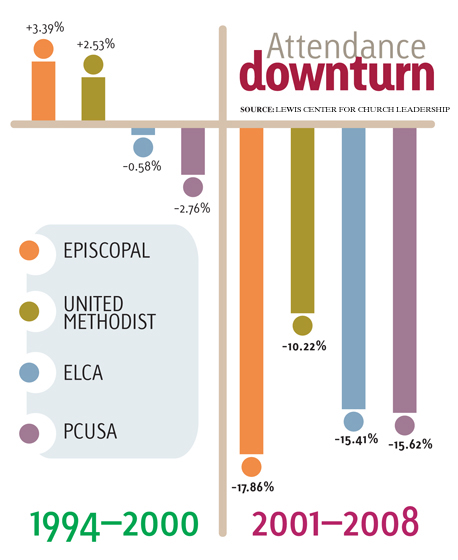Fewer and Fewer Worshippers
For the last several decades, membership in mainline denominations has been declining. Over time, membership has become a less helpful statistic in part due to a change in how younger people view church membership. Given these changes and others, church attendance has become the sociological standard measuring growth or decline. Lovett H. Weems Jr., distinguished professor of church leadership and director of the Lewis Center for Church Leadership at Wesley Theological Seminary, wrote an article for the Christian Century comparing the changes in church attendance in mainline denominations in recent years. While many readers may be shocked to learn that during the first time period (1994-2000) the four mainline denominations researched showed a slight increase in attendance, most will not be surprised that during the second time period (2001-2008) those same groups experienced double digit declines.
So What?
How do you explain the increase in worship attendance during the first time period, which was a time when denominational membership declined?
The article suggests three possibilities for why the decline has been so dramatic during the second time period: worshippers attend less frequently, aging constituencies, and lack of interest in religion. Which of these do you believe is most likely? What additional changes do you believe have contributed to the steep decline?
In recognition that both membership and attendance have declined significantly in recent years, what systemic changes do you believe are essential if the mainline denominations hope to reverse these trends and move toward sustained growth?
